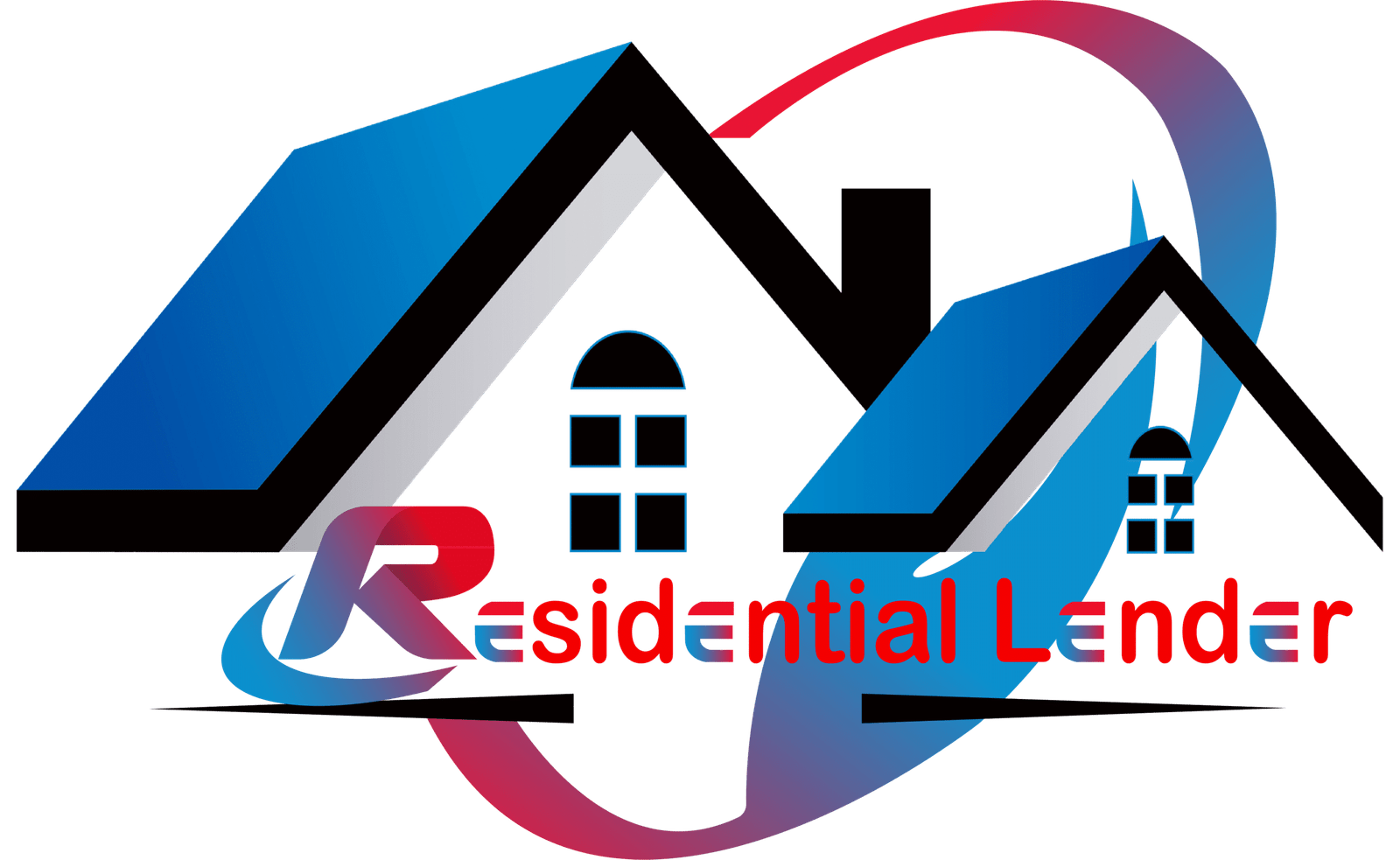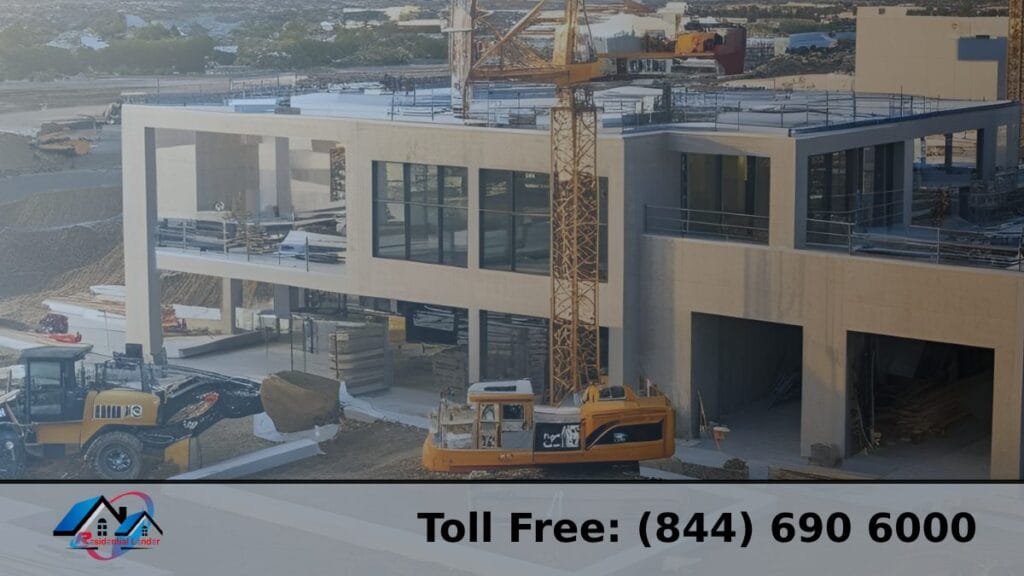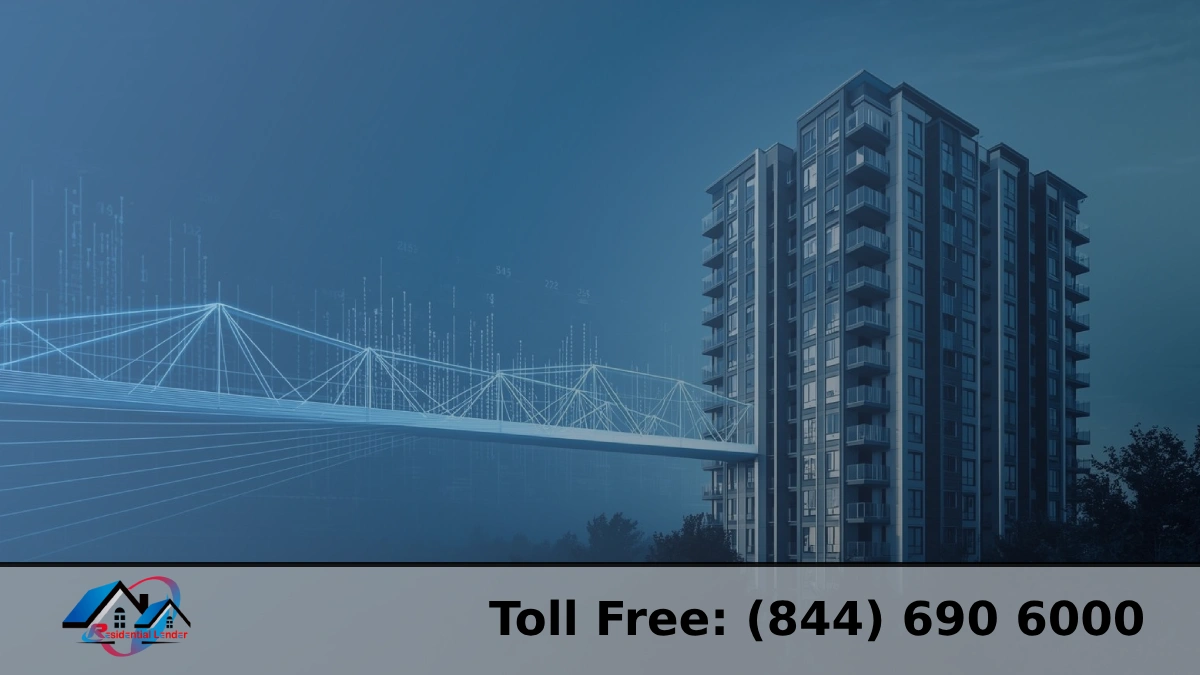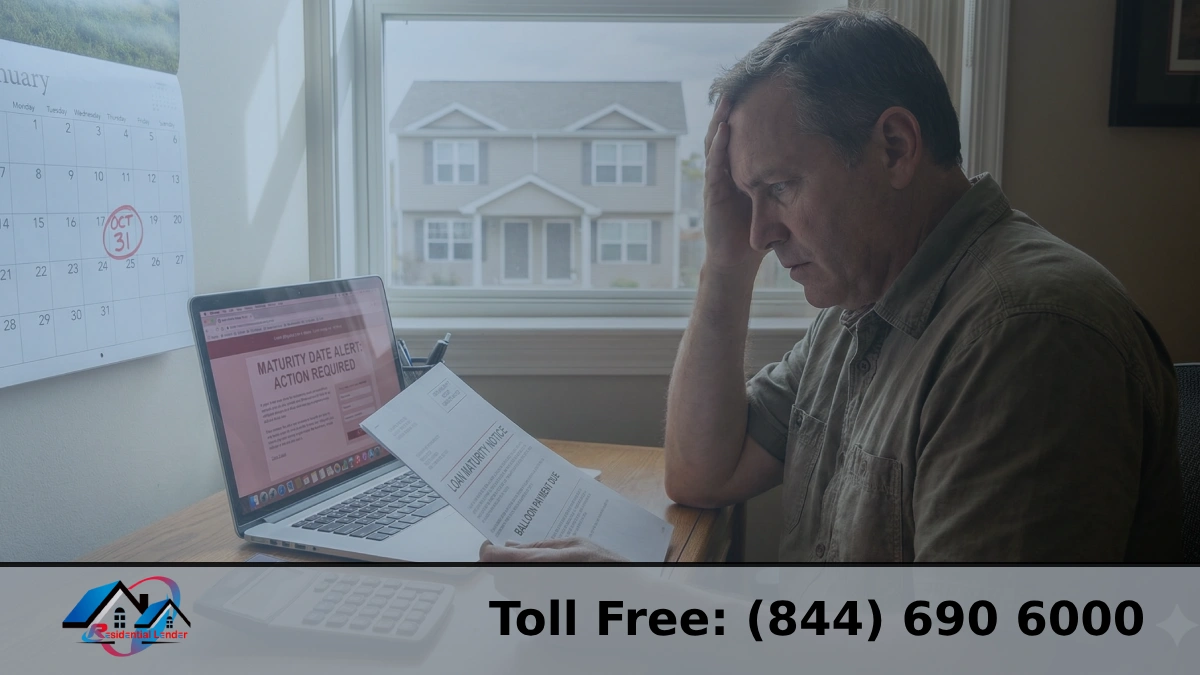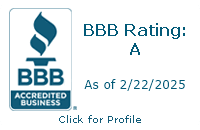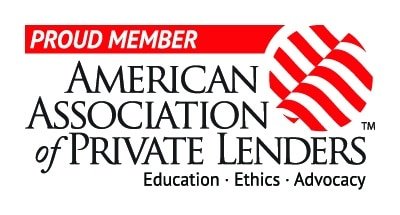It’s exciting to start a commercial building job, but some people have trouble figuring out how to pay for it. Understanding how loan rates work is more important than ever since the commercial construction market in the U.S. is projected to keep growing. If you lock in the best “commercial construction loan rates,” how can you build a structure and a sound financial future for your investment?
The interest rate on a commercial construction loan can significantly impact the project’s profitability. It can change how much money is spent and how much is made back. Small changes in rates can add up to significant savings or extra costs over the life of the loan.
This blog post will help you get the best rates and terms for your next project. We’ll discuss why these rates change, how to get better deals, and how to set up your project to get funded. ResidentialLender.Net can help people looking for a reliable travel companion get around fast by giving them helpful information and connections.
What Defines Commercial Construction Loans and Their Rates?
A “commercial construction loan” covers the short-term costs of massively constructing or fixing up businesses. Multifamily apartment complexes, “mixed-use buildings,” and “residential investment properties” are some of the projects being considered. Mixed-use buildings have both retail and office space and living units. Getting this loan is often the first thing people do when they want to build or fix something used for business.
Compared to long-term or regular commercial mortgages, these loans are different in a few significant ways:
- Draw Schedules: With a regular mortgage, the money is ready immediately at closing. On the other hand, loans for building a business give you the money over time, on a “draw schedule.” In other words, the loan money is given in stages as the project meets specific goals, such as completing the foundation, framing, and roofing. Some lenders need proof of growth before letting the next draw go through, adding another level of control.
- Interest-Only Payments During Construction: People who borrow money generally only pay interest on the borrowed money. At the same time, the building is still being built. When the house isn’t making money yet, this helps them keep track of their money.
- Transition to a Permanent Loan: Because the work takes that long, most short-term commercial construction loans are for 12 to 24 months. The construction loan is usually paid off when the building is finished, and a certificate of occupancy shows the home is ready to live in. To meet this goal, most people get a “permanent commercial mortgage” with a longer repayment term and make payments on both the principal and the interest. You could also try selling the house. Some loans, called “construction-to-permanent” loans, can make this process easier by turning the loan into a mortgage right away when the job is done. You can avoid paying extra closing costs if you do this.
There are many “common uses” for commercial construction loans, each one suited to a different stage of building a property or investing in one:
- Purchasing Land: In this step, you buy the land where the business project will be built. This is especially important if you want to start building quickly.
- Construction: Paying for building new business buildings from the ground up.
- Fix-and-flip means getting money to make significant changes to a house so you can sell it quickly for a profit.
- Fix and Hold/Fix and Rent: This involves paying for the costs of buying and fixing up a property that the investor plans to keep for long-term rental income and capital growth.
Note that the APR on commercial construction loans can be “fixed or variable,” another word for “floating rates.” Many times, these rates are higher than regular fixed mortgage rates. This is because lenders take on more risk when they lend money for projects that aren’t finished or are not making money yet. There are a lot of factors that will affect the rate you get, which we will talk about next.
Decoding Your Rate: Major Factors Influencing Commercial Construction Loan Rates
It is essential for the financial success of your project that you get a commercial construction loan with a fair interest rate. When lenders decide how risky a loan is, they look at many different things. These are the things that they use to come up with these rates. Knowing these things can help you show your job better.
Your Financial Profile and Creditworthiness
Lenders mainly consider the likelihood of repayment, which is a big part of your current financial situation.
- Credit Score (Personal and Business): A good credit score is essential. Investors or business owners will have their credit scores (like FICO scores) looked at closely. Businesses around for a while will also have their credit records looked at. Higher scores usually mean less danger, leading to better interest rates and terms.
- Financial History, Income, and Existing Debt: Lenders will carefully review your financial past, including your gross and net worth and your sources of income (both from current businesses and the new project). The most important thing they will look at is your present debt service coverage ratio (DSCR), which shows how much of your income can be used to pay off your current debts. If you have a lot of debt or a history of financial problems, you may have to pay higher rates or even be turned down for a loan.
- Perceived Risk: Lenders are in the business of controlling risk, after all. A borrower with stable finances, a history of meeting their responsibilities, and enough cash on hand is considered a lower risk, meaning interest rates could be better.
Project Viability and Risk Assessment
An essential factor in figuring out the interest rate is the type of construction job.
- Type and Complexity of the Project: What property you’re building matters. Investing in various kinds of properties carries different risks. These include single-family rentals, mixed-use developments with retail and living areas, and large multifamily investment properties. Projects that are more difficult or in niche areas are riskier.
- Location and Market Conditions: The site of your project is significant. Lenders look at things like vacancy rates, demand in the local market, similar property prices, and trends in economic growth. If there is a substantial market for the type of property you’re building, you can lower your rate and risk. On the other hand, there is more danger in a saturated or declining market.
- Developer’s Experience and Track Record: Developers must complete similar tasks on time and within budget. As lenders weigh the risk of inexperience, first-time producers or those with a short track record may have to go through more scrutiny and, as a result, pay higher rates.
- Detailed Construction Plans and Realistic Budget: A well-thought-out project starts with thorough plans and a budget that is based on reality. This includes architectural drawings, engineering specifications, an explicit schedule for work, and extra money in case costs go over budget. Plans that aren’t clear or a budget that is too low can be signs of problems and make risks seem higher.
Loan Specifics and Market Conditions
Your rate is also highly affected by the terms of the loan and the state of the economy at the time.
- The Loan Amount Requested: Larger loan amounts seem riskier, but larger, well-structured projects with strong foundations can sometimes get better rates from lenders ready to handle bigger deals. However, the lender’s general risk is always considered.
- Loan-to-Cost (LTC) and Loan-to-Value (LTV) Ratios are crucial. LTC looks at how much the loan is compared to the total construction project costs, including land, complex, and soft costs. LTV examines the difference between the loan amount and the project’s estimated value. Lenders want lower LTC and LTV ratios, which means that you, the borrower, need to put down more money or give more equity. Higher equity implies that the client is more committed and the lender takes on less risk, which usually leads to better rates. Lenders typically lend up to 60–80% of the LTC for construction.
- The Loan Term: Most commercial construction loans have short terms (12 to 36 months) that cover the building and stabilization time before the loan is converted into a permanent loan or the property is sold and paid off. The exact word can change how rates are calculated.
- Prevailing Economic Conditions and Benchmark Interest Rates: Larger economic factors have a considerable effect. All interest rates on loans are affected by the state of the economy, the rate of inflation, and the monetary policy set by central banks (in the U.S., this is the Federal Reserve). Most of the time, the price of commercial construction loans is based on a spread over a benchmark rate, like the Prime Rate (the rate banks charge their best customers) or, more and more, the Secured Overnight Financing Rate (SOFR), which has mostly taken the place of LIBOR. Rates for new construction loans will likely change along with these benchmark rates. As of the middle of May 2025, it’s essential to keep up with changing standard rates and economic predictions.
- Higher Perceived Risk: It’s a simple fact that interest rates on construction loans are usually higher than rates on regular business mortgages for already stable properties, and making money. These are the risks that come with the loan: the security (the building) doesn’t exist in its entirety at the start of the loan; there’s also the chance that the construction will take longer than planned or cost more than expected; and the property isn’t yet making money to pay off the debt.
The Lender You Choose
Not all lenders are created equal, and their policies, funding sources, and risk appetites will affect the rates they offer.
- Traditional Banks and Credit Unions: These places usually have stricter rules about who can borrow money. However, they might offer reasonable rates to qualified people with good credit and low-risk projects. They typically have lower cash costs.
- Private Lenders (Hard Money Lenders): Private lenders can fund projects faster than don’t meet the strict requirements of traditional banks because they don’t have to follow the same strict rules. Conversely, this flexibility generally comes with much higher fees and interest rates to make up for the extra risk they are taking.
Specialized Real Estate Lenders: Some lenders only work with commercial construction loans. You might find the following in this category:
- Table Lenders (or Portfolio Lenders): When these lenders make loans, they use their own money (their “balance sheet”) and keep the loans on file (in their portfolio). They choose who gets the loan and what the terms are.
- Correspondent Lenders: These lenders give out loans and sometimes back them up to sell them to more prominent buyers or institutions, like Fannie Mae and Freddie Mac for residential projects or insurance companies and investment banks for bigger business deals. It doesn’t matter that they close the loan in their name; they still follow the end buyers’ rate and underwriting rules. In this case, ResidentialLender.Net might connect borrowers with different lenders, helping to find the best match based on the borrower’s history and the project.
You first need to learn about these factors to get the best commercial construction loan rate for your job.
What Are Typical Commercial Construction Loan Rates Today?
When looking at commercial construction loan rates, knowing there isn’t a single, set number is essential. Rates change constantly and depend on the borrower, the project, the lender, and the loan terms.
But as of May 2025, the average interest rate on a commercial construction loan can be anywhere from 6.8% to 13.8%. Some sources say that rates might be slightly higher or lower than this for certain building types or through specific lending programs. For example, rates might be lower for highly qualified borrowers working on less complicated projects. On the other hand, projects with specialized private lenders that are more difficult or risky might go toward the top end or even higher. For example, SBA 7(a) loans, which can be used for building projects, might have fixed rates between 12.5% and 15.5%, depending on the loan amount (based on the Prime Rate of 7.50% plus the SBA’s highest rate as of early May 2025). Bridge loan rates, often used for short-term needs like building, can be as high as 9.0%.
It’s important to know that these numbers are just guides. The actual rate you may be offered depends on how well your credit is checked and the details of your deal. Before giving you a precise quote, lenders will carefully look at your financial situation, the project’s viability, the loan amount, LTV/LTC ratios, and the current state of the market.
Also, the rates for commercial construction loans can be set up in one of two ways:
- Fixed Rate: The interest rate remains the same for the loan term (or a set period), providing predictability in payments.
- Variable Rate: The interest rate is tied to a benchmark index (like the Prime Rate or SOFR) and can fluctuate up or down as the index changes over the loan term. This means payments can change.
Rates fluctuate due to a confluence of factors:
- Economic Indicators: What affects the base cost of borrowing? The general health of the economy, inflation rates, and the monetary policy set by central banks (like the Federal Reserve’s target for the federal funds rate) are some of the main factors.
- Lender Policies and Risk Appetite: Lenders change their rates based on how much money they have to give, how much risk they are willing to take, their strategic goals, and the costs of getting money for construction projects. Rates can change when internal rules change or when the risk of specific industries or types of projects is seen as higher.
- Market Demand: It can also depend on how many people want to borrow money for construction projects. Rates may be better when there is a lot of competition in the loan market, but they may be higher when credit is tight.
Because of this, it is essential to get quotes from more than one lender and fully understand all the terms of a loan deal.
Navigating Your Options: Types of Loans for Commercial Construction and Their Rate Implications
Choosing the right loan type is as essential as the building plans because it affects your interest rates, terms, and the project’s total cost. At ResidentialLender.Net, we can help you find financing options for your commercial construction project, whether for a single-family home, a mixed-use development, or a residential investment property. Here are some popular types of loans and how their rates usually work:
Standard Construction Loans
These are the central loans for most new constructions or major renovations to business properties.
Funding the whole building process from the ground up, covering costs like materials, labor, permits, and more.
Rate Effects: Rates are usually variable or set for shorter terms, and they are generally higher than permanent mortgage rates because there are risks involved with a project that isn’t finished yet. The rate will be based on your credit score, the LTC, the details of the job, and the lender. When the building is being built, payments are often only interest on the amount drawn.
Bridge Loans and Hard Money Loans
These short-term loan options cover you until you can get longer-term loans or sell the property.
Use: This is the best way to pay for urgent construction costs, buy a property quickly for development, or make a fix-and-flip investment. A long-term loan is also being handled.
Effects on Rates: You can expect interest rates to be much higher (maybe 8% to 15% or more, especially for hard money) and transaction fees to be higher (about 2% to 4%). Even though they cost more, they give you faster access to capital and often more flexible underwriting based on your assets than standard bank loans.
SBA Loans (e.g., SBA 504, potentially 7A for some aspects)
The Small Business Administration (SBA) helps small businesses get government-backed loans for commercial construction. The terms of these loans are usually good for small companies that qualify.
SBA 504 Loans: These loans are primarily for buying land, buildings, and long-term machinery and equipment, such as for building new facilities or updating old ones (usually for business real estate that the owner lives in).
Rate Implications: The first lender is a bank, which gives about half of the project’s cost at a market rate that can be fixed or variable. The second lender is a Certified Development Company (CDC), which gives up to 40% with an SBA-guaranteed loan at a fixed, usually below-market rate for the loan term (10, 20, or 25 years). The borrower puts in at least 10%. Effective rates for the SBA debenture (CDC part) have been competitive since May 2025. However, the overall blended rate is based on the bank’s portion.
SBA 7(a) Loans: A more flexible SBA loan that can be used for many things, like buying and building real estate, getting working capital, and buying equipment.
Rate Implications: Most of the time, interest rates change based on the Prime Rate plus a margin set by the lender and SBA rules. For example, Prime + 2.25% to Prime + 4.75%, depending on the loan size and length. As of May 2025, the Prime Rate was about 7.5%, which meant that rates could be anywhere from 8.50% to over 10%. However, these are just guidelines. These loans may be easier to get with the help of the government’s promise.
USDA B&I Loans
The Business & Industry (B&I) Guaranteed Loan Program of the U.S. Department of Agriculture (USDA) is meant to help rural businesses grow and create projects.
Use: This can include buying, building, converting, fixing, or updating commercial property in rural places that the USDA says are eligible.
Rate Implications: The USDA guarantees a loan to an approved private lender for up to 80%. This makes the lender more likely to give better terms, such as lower interest rates or longer repayment terms (up to 30 years for real estate), than they would without the guarantee. Both the client and the lender agree upon rates.
FHA Commercial Property Investment Loans (Primarily for Multifamily)
The Federal Housing Administration (FHA), part of HUD, backs loans made by FHA-approved lenders. These loans are primarily for homes but cover more prominent multifamily investment buildings.
Use: FHA 221(d)(4): This program is only for building new multiple rental homes (usually five or more units) or fixing up old ones in a big way. With up to 85% LTC for market-rate projects and long fixed-rate terms (up to 40 years plus the construction time), it gives you a lot of room to borrow.
Rate Implications: Because the FHA backs these loans, the interest rates are usually low and stay low for a long time. FHA 221(d)(4) rates were around 6% as of early May 2025, plus the Mortgage Insurance Premium (MIP). On the other hand, FHA loans have a stricter screening process and must follow strict HUD rules. Note: Standard FHA loans may be available for buildings with two to four units if the borrower lives in one of the units.
Construction-to-Permanent Loans
These loans, also called “one-time close” loans, cover both the permanent mortgage and the money for the building part all at once.
Use: It will make it easier to get financing for new construction, including buying land and paying for building costs. Once construction is done, the loan will be converted to a typical long-term debt.
Rate Implications: With this choice, borrowers don’t have to pay for and deal with two different loan closings. Most of the time, the interest rate on the fixed part is locked in at the start, protecting against rates going up. When building something, payments are generally just interest. This rate may be higher than a construction loan or a mortgage taken out separately at a later date. Even so, the single closing and rate protection can be helpful.
Other Niche and Permanent Financing Considerations
Commercial construction projects meant to be long-term rental investments often use unique loan products for the “take-out” or permanent funding. Even though these aren’t usually used during the construction process, it’s essential to understand them for the investment strategy as a whole:
DSCR (Debt Service Coverage Ratio) Loans: For these loans, the borrower’s income is less important than the business property’s ability to bring in enough money to cover its debt payments.
Rate Implications: Most of the time, rates are higher than those for regular owner-occupied mortgages, but they can be competitive if you have a good DSCR ratio (1.25% or more). Most of the time, less proof of personal wealth is needed. According to sources, rates for stable rental homes could be anywhere from 6% to 8% as of May 2025. Rates from private lenders would be higher.
No-Doc, Lite-Doc, and Stated Income Loans: Traditional loans need more proof of income or assets than these choices. “No-Doc” means very little paperwork, “Lite-Doc” means less paperwork, and “Stated Income” means the lender will accept the borrower’s stated income without doing all the usual checks.
Rate Implications: These loans have much higher interest rates and fees than fully recorded loans because lenders think they are riskier. Most of the time, non-QM (Non-Qualified Mortgage) or private lenders offer them. They might work for experienced investors with a lot of stock who have trouble showing their income in the usual way.
It can be challenging to compare these different loan types and rates. ResidentialLender.Net can help you sort through these choices and choose the best financing option that fits your commercial building project’s size, budget, and long-term investment goals.
Where to Go: Lender Types and Their Impact on Commercial Construction Loan Rates
Different lenders offer different interest rates, loan terms, and loan amounts. The type of lender you choose for your business construction project can also affect how quickly you get the money. To find the best lender for your business, you must know about the different types of banks.
Traditional Lenders: Banks and Credit Unions
Many people who need to borrow money for a business building start by going to banks and credit unions. These can be big national banks or small banks in your neighborhood.
- Rate Impact & Characteristics: They may have some of the best interest rates, especially for approved people with good credit and low-risk projects. This can happen when they can get money for less.
- Underwriting & Process: Traditional lenders are usually picky about who they offer money to. They will carefully check your credit background, finances, and the ability of the project to work. They will also need clear building plans and budgets. Due to the length of this process, it might take longer to handle and accept.
- Risk Appetite: Banks and credit unions rarely want to take chances. They might be less likely to give money to people with bad credit, little experience, strange projects, hard-to-understand projects, or dangerous projects.
Private Lenders and Investors
This group includes many different kinds of non-bank lenders, from private and hard money lenders to individual investors. At ResidentialLender.Net, we have built a strong network of more than 200 private lenders and investors, which gives our clients more choices.
Rate Impact & Characteristics: Private lenders offer more loan terms and acceptance options. They can often finish deals faster, essential for quick acquisitions or jobs like “fix-and-flips.” However, these lenders might be unable to fund specific projects or types of customers because they have special needs, need more debt, or need to pay it back quickly.
Rate Considerations: They want a higher return to make up for what they see as higher risk, shorter loan terms, or the fact that the financing is one of a kind. This means the fees and interest rates they charge might be more significant than those of regular loans. But “higher” doesn’t always mean better. Terms can still be very competitive with the right project and a good pitch, especially since they are quick and straightforward.
Correspondent Lenders and Table Lenders (Like ResidentialLender.Net)
Often, companies like ResidentialLender.Net work as go-betweens for debtors and a wider range of funding sources. One way they do this is through correspondence and table funding agreements. This plan will help.
Our Role Explained: As correspondent lenders, we may make loans and sometimes even pay them at first, then sell them on the secondary market to more prominent investors or institutions. This lets us give these end buyers a choice of loan plans that fit their needs.
Setting up table funds allows our name to be on the loan. The money still comes from an investor who promised to give something at the closing table. This way, borrowers can get loans from more cash pools, making the process easier.
Highlighting Benefits for You
- Access to Diverse Funding Sources: Through our relationships, you can get loans and capital from more places than if you went to only one bank or lender. This makes it more likely that you will find a program that works for your mixed-use, multifamily, or private business project.
- Tailored Solutions: We don’t have to force you into a rigid set of loan products. Instead, we can help you find financing that fits your project’s goals and budget.
- Potentially Better Loan Terms: We can get better loan terms using our contacts and knowing what different lenders want. We also know where to put different types of deals.
- Our 30 Years of Underwriting Expertise: This is where ResidentialLender.Net shines. We have been underwriting for 30 years, so we know how to look at your loan request, put it together best, and send it to the right capital sources. By understanding these things, you can avoid problems, make them less likely to happen, and ultimately improve your chances of getting the best rates and terms for your commercial construction loan.
Setting Yourself Up for Success: Qualifying for Lower Commercial Construction Loan Rates
It’s not enough to find the right lender to get the best rates on a commercial construction loan; you also need to ensure that you and your project look as good as possible. Lenders want to lend money to well-prepared people with low risk. Here’s what you can do to make your case stronger:
The Importance of a Strong Application Package
Your first and best impression is a carefully put-together application package. It shows that you are professional, ready, and know what you want your project to be.
- Detailed Business Plan and Project Proposal: It’s not just an idea. In your business plan, write down the project’s goals, target market (especially for investment buildings like multifamily or mixed-use), viability, and the amount of money you expect to make. The project plan should include information about the types of structures that will be built, how they will look, and what they will be used for (for example, rental apartments or mixed-use buildings).
- Accurate Cost Estimates and Construction Timelines: Provide a complete list of all expected costs, including hard costs like materials and labor, soft costs like design fees, permits, and legal fees, and a backup fund (usually 10 to 20 percent of hard costs) in case the actual costs go up more than expected. A realistic, detailed building schedule with critical checkpoints shows you’ve considered how to carry out the plan.
- Financial Statements (Personal and Business): The lender will examine your health closely. Prepare up-to-date personal financial statements (including assets, debts, and net worth) for all owners and historical financial statements (including balance sheets, income statements, and cash flow statements) for already-up-and-running businesses. These papers show that you know how to handle money and debt.
- Proof of Experience (Your Portfolio): If you or your team has a history of winning construction jobs, ensure people know about it. Lenders may be less likely to turn down your application if you show them a collection of finished projects, including financials, timelines, and references.
- Good Credit Score Maintenance: Your business and personal credit scores are essential. Check your credit report often to ensure it is correct, pay all your bills on time, don’t use too much credit, and handle your current debt responsibly. A better credit score means you are seen as less of a risk, which means lower interest rates.
Key Documentation Lenders Will Require
Different lenders and loan types have different standards, but you always need a complete set of documents. The process will go faster if you are organized and give these quickly. Some ordinary papers are:
- This is usually for the last two to three years for personal and business tax returns.
- Bank records are the most recent personal and business bank records to check cash flow and liquidity.
- Documents for Entities: If you want to borrow money through a business entity, like an LLC or corporation, you’ll need documents for formation, operating agreements, and proof of your EIN.
- Detailed project budget and cost breakdown: listing all expected costs.
- Architect and engineer plans include complete, thorough blueprints and lists of requirements.
- Bids and contracts from contractors: signed contracts with your main contractor and major subcontractors, along with proof of their skills, licenses, and insurance.
- Construction schedule or timeline: showing the job stages and when they will be finished.
- Proof that you own the land or a purchase agreement if you don’t already own it.
- Zoning and permit approvals show that the project follows local rules and has all the necessary permissions (or a straightforward way to get them).
- A report that tells you how much the land is worth “as-is” and how much the finished project is worth “as-completed” or “as-stabilized.”
- Environmental Reports: Phase I (and maybe even Phase II) environmental site surveys are essential, especially when land is being bought or a lot of work is being done.
- General liability insurance and builder’s risk insurance are included in the proof of insurance.
It’s important to remember that everything depends on getting the credit, and lenders may ask for more details about your project.
Demonstrating a Solid Down Payment/Equity Contribution
Banks want to see that you have a lot of “skin in the game.” Putting in more stock shows you’re serious about the project and lowers the lender’s risk.
- Equity Requirements: Most lenders want this: 10% to 30% or more of the total project cost as stock. This could be cash, land value already owned (as long as it doesn’t owe any money or has enough equity), or long-term development fees.
- Impact on Rates: When you put up more equity, the lender’s loan-to-cost (LTC) and loan-to-value (LTV) ratios decrease, making the loan less risky. This can mean better interest rates and loan terms.
Understanding Debt Service Coverage Ratio (DSCR) Expectations: You must show lenders the Debt Service Coverage Ratio (DSCR). This is important if your business building project is a rental property that will make you money, like a residential investment property or a multifamily, mixed-use building with rentable space. The DSCR looks at the property’s predicted net operating income (NOI) and the debt it needs to pay off, including the principal and the interest.
Lenders usually want a DSCR of 1.20x to 1.25x or higher for the new loan that will replace the construction loan. This means the house should bring in 20–25% more money than it needs to pay its mortgage.
The DSCR is more critical for the take-out loan, but when you apply for a construction loan, showing a healthy pro-forma DSCR and a lot of projected income can make lenders more confident in your project’s long-term viability and ability to get permanent financing. This could lead to better terms on the construction loan.
If you carefully combine these parts of your loan application, you will have a better chance of getting the best rates on a commercial construction loan.
Proactive Steps: Smart Strategies to Secure the Best Commercial Construction Loan Rates
Getting the best commercial construction loan rates takes more than just an interesting project idea. You need to plan and be in the right place at the right time. Taking specific steps can make you more appealing to lenders and improve your chances of getting better terms.
Improve Your Credit Score Before Applying
A lender will look at your personal and business credit scores as a basis for their decision. A higher score usually means less danger, which means better rate offers. Before you apply, check your credit records for mistakes and dispute any. Pay all your bills on time, eliminate any extremely high-interest open credit you still owe, and keep your credit utilization ratio low. Don’t open up any new credit lines you don’t need before or during the loan application process.
Shop Around and Compare Offers (Let Us Do the Heavy Lifting)
Don’t take the first loan deal that comes your way. Rate quotes from lenders can be very different because they all have different risk tolerances, overhead costs, and profit goals. It’s important to compare deals. ResidentialLender.Net’s extensive network is invaluable in this situation because we do all the shopping for you. We can get you multiple quotes and help you find the best terms for your project by using our contacts with many banks, private lenders, and institutional investors.
Have a Significant Down Payment/Equity
Lenders like borrowers who have a lot of “skin in the game.” The loan-to-cost (LTC) and loan-to-value (LTV) ratios go down when the down payment or equity input is more significant (20–30% or more of the total project cost). This lowers the lender’s risk. This shows that you are responsible and stable with your money, which can lead to better interest rates and loan terms.
Present a Well-Documented, Low-Risk Project
Lenders love it when a project plan is carefully thought out and includes ways to deal with potential risks. Among these are:
- Hire experienced architects, engineers, and contractors: If the team has worked on similar projects and done them well, lenders can ensure the project will be finished on time, on budget, and to a high standard. This significantly lowers the chance of construction.
- Secure necessary zoning and permits early: Getting required permits and zoning approvals (or a clear path to getting them quickly) before finishing the loan shows that you did your research and cuts down on uncertainty and delays that could add costs and risk.
- Have a contingency fund: Including a large emergency fund (10–20% of the complex building costs) in your budget shows you are ready for unplanned events, cost overruns, or delays. This makes the project more appealing to lenders.
Negotiate Loan Terms Holistically
The interest rate is essential, but it’s not the only thing to consider. Look over and talk about every part of the loan deal sheet, such as:
- Fees for getting the loan and other costs
- What prepayment fines are, how long they last, and how they are calculated
- Make schedules and fee systems for inspections.
- Loan terms and conditions for reporting
- Provisions for recourse. You can accept a slightly higher rate if the other terms, like lower fees or more flexible prepayment options, are better for your project’s overall financial plan.
Consider Your Options: Fixed vs. Variable Rate
Take the time to understand what the different rate systems mean. With a fixed rate, you know exactly how much interest you’ll pay during the building period (or longer if you have a construction-to-permanent loan). This can help you stick to your budget, especially when rates are rising. On the other hand, the starting rate for a fixed-rate loan might be slightly higher than the rate for a variable-rate loan. Variable rates may be cheaper initially, but can change based on market benchmark rates (like SOFR or Prime). This can cause uncertainty, but if rates fall, it could mean lower interest rates. Check your willingness to take risks and the market’s future before choosing.
Work with an Experienced Financial Consultant or Broker (Like ResidentialLender.Net)
Finding your way around the complicated world of business construction financing can be challenging. A financial expert or broker with a lot of experience, like the team at ResidentialLender.Net, can be beneficial. We know the market, the lenders, and the best way to put together a loan request so that you get the best results. Our experience can help you make a strong application, find the best lenders from our extensive network, negotiate terms well, and walk you through the process. This will save you time and help you get better rates and terms than you might otherwise get.
These proactive steps can significantly improve your negotiating situation and raise your chances of getting the best commercial construction loan rates for your next successful project.
Key Loan Terms and Fees Associated with Commercial Construction Loan Rates
When looking at commercial construction loans, the advertised interest rate is only one part of the picture. It’s essential to look beyond that headline number and into other loan terms and fees that can significantly affect your project’s bottom line to understand how much it costs to borrow and make an informed choice. Even if the interest rate is cheaper, it might not be worth it if there are high fees or strict terms.
Here are the standard fees and terms you need to be aware of:
Origination Fees: The lender charges a fee up front to process and start the loan. It’s usually found as a proportion of the whole loan amount, like 0.5% to 2% or even more, especially for more complex money loans or loans that are more complicated or specialized.
Processing Fees: Besides the processing fee, these may cover the costs of preparing and checking your loan application.
Appraisal and Inspection Fees
- Appraisal Fees: Lenders need an outside estimate to determine the land’s current value and the property’s expected value when it is finished (“as-completed value”). This is essential to evaluating risk; the user usually pays for it.
- Inspection Fees: During the construction phase, lenders will check the site regularly to ensure that work is going as planned and funds are being released on time. Often, the borrower pays for these checks.
Legal Fees: The borrower and the lender will probably have to pay lawyers to review and prepare loan papers, ensure they are followed, and handle the closing. Most of the time, the borrower pays their and the lender’s fair legal fees.
Title Insurance: Lenders need title insurance to protect their stake in the property against claims or problems with the title they didn’t see coming. The borrower pays for this coverage.
Other Potential Fees: Other fees that apply are survey fees, environmental report fees, recording fees, broker fees (if any), and possibly guarantee fees (for SBA loans). These depend on the lender and the complexity of the loan.
Understanding Draw Schedules and How Interest is Calculated:
Commercial construction loans are usually not given out all at once. Instead, the money is released in stages, or “draws,” as the project meets specific building goals. It is essential to know that during the construction phase, interest is generally only calculated on the amount of money drawn down so far, not on the full amount of the approved loan. During the building, this interest-only payment plan helps keep cash flow in check before the property starts making money.
Prepayment Penalties:
It’s essential to understand if and how prepayment penalties apply.
During Construction: This type of short-term loan is less likely to have prepayment fees because it is meant to be paid off when the project is finished, either by selling the house or refinancing it. But it’s always a good idea to make sure.
For the Permanent Loan: If you have a construction-to-permanent loan or the construction loan is refinanced into a permanent commercial mortgage, the permanent loan may charge you extra if you pay it off early. You must pay these fees if you pay off the loan before the due date. Some standard designs are:
- Step-down penalties: The fine decreases yearly, for example, 5% in the first year, 4% in the second, and so on.
- Yield maintenance: A more complicated estimate is needed to ensure the lender gets the same return as if the loan hadn’t been paid off early.
- Defeasance is the act of replacing the collateral with government stocks that mimic the loan’s cash flows. It’s used frequently with CMBS loans. Suppose you plan to sell the house or refinance the permanent loan soon after stabilization. In that case, it’s important to negotiate for low or no prepayment fees.
Why it’s essential to read commercial mortgage documents carefully
The loan agreement and other business mortgage documents are legally binding contracts that spell out what you have to do and what the lender has the right to do. There is no way around it:
- Read every document thoroughly.
- Understand all terms, conditions, fees, and potential penalties.
- Get a lawyer specializing in business real estate finance to review the papers before signing them. They can help you find terms that aren’t good for you, make complicated language easier to understand, and negotiate.
If you pay close attention to these details, you can avoid shocks and ensure the financing will help your project make money in the long run.
Your Partner in Success: How ResidentialLender.Net Navigates Commercial Construction Loan Rates for You
Getting the right financing at the best rates is essential for any commercial construction project. Still, it’s important because we work in private investment real estate. This includes rental homes with one or more units, apartment buildings with many units, and mixed-use areas with much living space. At ResidentialLender.Net, we are here to help you with your money. We can help you understand industrial construction loan rates and terms because we have been in the business for a long time and have nailed it down.
Our Distinct Approach:
Your Expert “Table Lender” and “Correspondent Lender”: ResidentialLender.Net is careful to be both a “table lender” and a “correspondent lender.” This means we can give loans and sometimes pay for them immediately with our lines of credit or cash partners who have agreed to fund the deal. We also get loans from several people who buy things on the resale market. Since we can do two things simultaneously, we can find the best ways to earn money that a straight loan might not provide.
30 Years of Underwriting Expertise: We understand what lenders want because we have been screening loans for 30 years in the real world. To get you a loan with good terms, we know how to look at your project, guess what problems might arise, and assemble your loan application. We know how to find the right type of loan and the right lender for your building project, whether it’s a new build, a significant renovation, or a move.
Access to a Network of 200+ Private Lenders and Investors: We’ve worked with over 200 private lenders and big investors for a long time, so you have more options. With this extensive network, we can make lenders compete for your loan, ensuring you get good and reasonable offers. Niche lenders are people who only give money for certain kinds of projects or who are willing to take on risks that regular banks might not be interested in.
Comprehensive Consulting Services: We help people with more than just loans; we advise them on everything. Our team helps clients with every step of the complicated financing process, from figuring out how much the project will cost and how much it will earn to putting together the application, negotiating the terms, and setting up the close.
Diverse Loan Portfolio Assistance: We can help you get a lot of different types of loans that you need to build and grow your business, including:
- Standard Construction Loans
- Short-term Bridge Loans and Hard Money Loans (ideal for quick acquisitions or fix-and-flip projects)
- SBA Loans (like the 504 and 7a programs for eligible businesses)
- USDA B&I Loans (for projects in eligible rural areas)
- FHA Commercial Property Investment Loans (particularly for multifamily construction and acquisition, like the FHA 221(d)(4) program)
- Permanent Term Loans
- Specialized take-out financing like DSCR Loans (for rental investment properties)
- Alternative documentation loans, such as No-Doc Loans, Lite-Doc Loans, and Stated Income Loans, are available for unique investor situations.
Partnering with Brokers:
ResidentialLender.Net values its relationships with brokers, no matter how little or much experience they have with commercial loans. We offer both exclusive and non-exclusive marketing plans to help you get deals done for your clients that are
- Land Purchase
- Ground-up Construction
- Fix and Flip Projects
- Fix and Hold Strategies
- Fix and Rent Investments
Regarding the type of properties we work with, our broker programs can help with projects involving single-family homes, multifamily homes with five or more units, mixed-use properties, and general rental investment homes.
ResidentialLender.Net can help you get the best rates and terms on commercial construction loans so you can earn money from your project.
Building Your Future: Final Thoughts on Commercial Construction Loan Rates
To get money for a commercial construction project, you should think about things like your ability to pay, your credit score, the power of your application, your wealth, the viability of the project, lenders’ preferences, and the state of the economy at the moment. The price is also affected by things like fees and loan terms. To get the best loan rates and terms, look into the market, learn what lenders want, and work with a financial adviser. Give lenders a low-risk reason to give you the money. It’s essential to have different kinds of loans, like construction loans, loans backed by the government, and specialized loans. When starting a business, you need a guide with much knowledge. ResidentialLender.Net has more than 200 private investors and lenders who can help you find the best rates and choices for your project. Get in touch with them to talk about your funding options.
FAQs
1. How long does it typically take to get a commercial construction loan approved and funded?
Commercial construction loans can take anywhere from 45 to 90 days to get approved and funded, depending on the type of lender, the project’s complexity, the size of the application package, third-party reports, and the state of the market. Traditional banks and SBA lenders do more research before lending money. Private or hard money lenders, on the other hand, can close deals faster but charge more.
2. Can I get a commercial construction loan if I plan to act as my general contractor (owner-builder)?
As an owner-builder, getting a commercial construction loan can be challenging because you don’t have enough experience, you might have a conflict of interest, you have to spend a lot of time, and you need to get licenses and insurance. Lenders like to work with general contractors who have a good track record. On the other hand, owner-builders may find it hard to manage projects and meet the standards for licensing and insurance. Some lenders might have tighter rules or not give money for these deals for business projects.
3. What happens if my construction project goes significantly over budget?
In construction, it’s essential to have a fund of 10 to 20 percent of the hard costs set aside in case something goes wrong. Lenders may ask the borrower to put up more equity, consider loan changes, or work on value engineering or scope reduction if expenses exceed this amount. Adding more types of loans, like mezzanine or junior loans, can complicate the capital stack. In the worst case, the project could be stopped, which would cost a lot of money and cause the loan to become due.
4. What are the common challenges when refilling a commercial construction loan into a permanent mortgage?
It can be difficult to move from a short-term construction loan to a long-term permanent mortgage for several reasons. Some of these are not meeting stabilization goals, changes in the market, problems with appraisals, poor building quality, delays, and getting worse financially. A clear exit plan with a preliminary analysis of long-term financing choices can lower these risks and ensure a smooth transition to long-term financing.
5. Can you get 100% financing or a no-money-down commercial construction loan?
It’s rare and hard to get commercial construction loans with 100% financing; the borrower usually has to put up a lot of equity. This shows dedication and lowers the lender’s risk. Genuine 100% funding usually includes extra collateral, seller financing, mezzanine debt, preferred equity, and partnerships. Those who want to borrow money should be ready to put up a lot of cash as equity input, and claims of 100% financing should be treated with great care and careful research.
